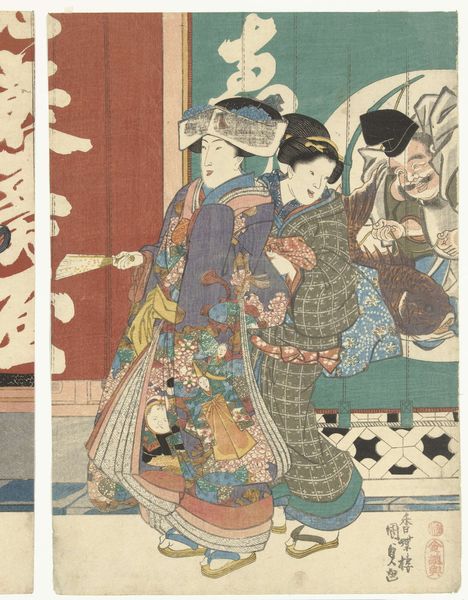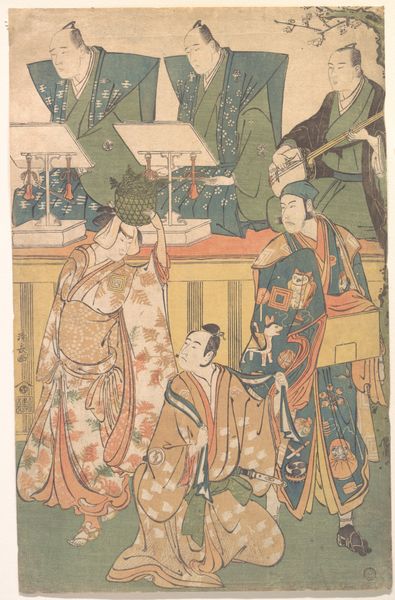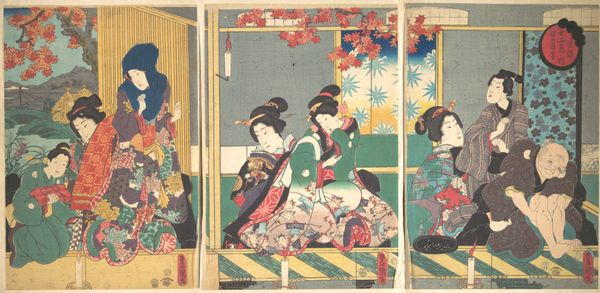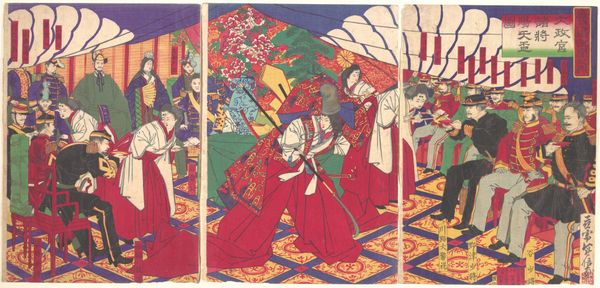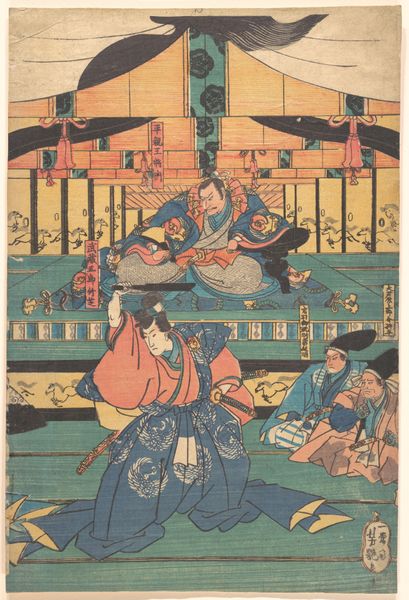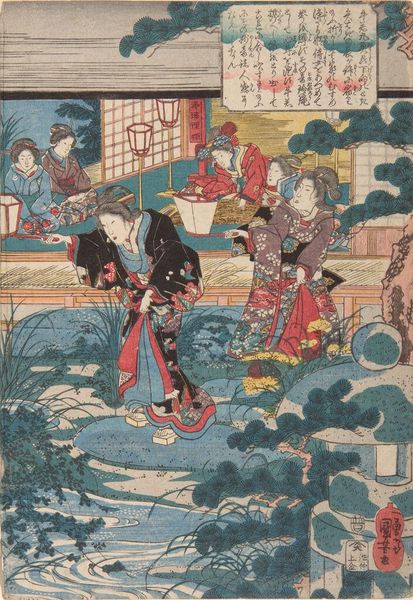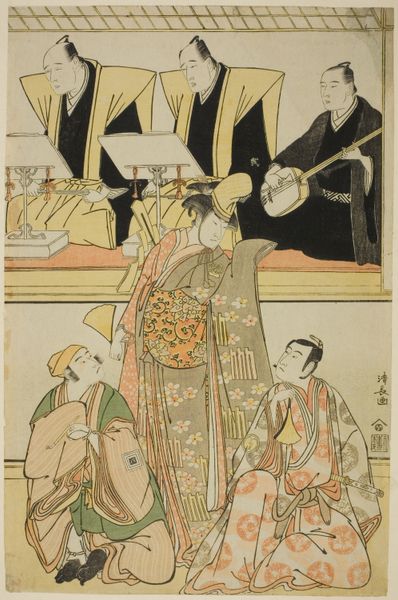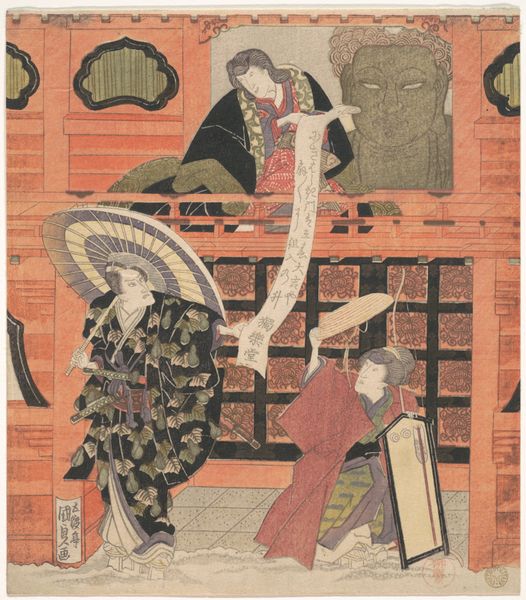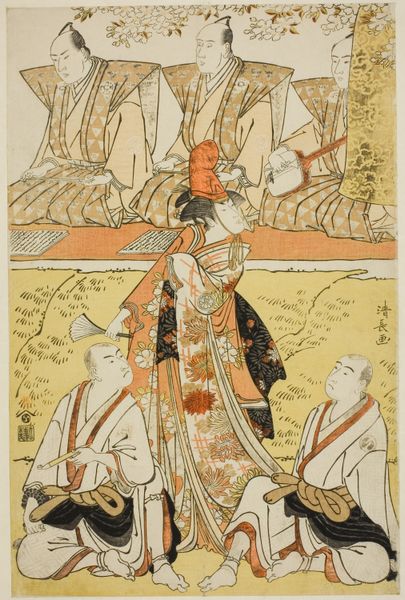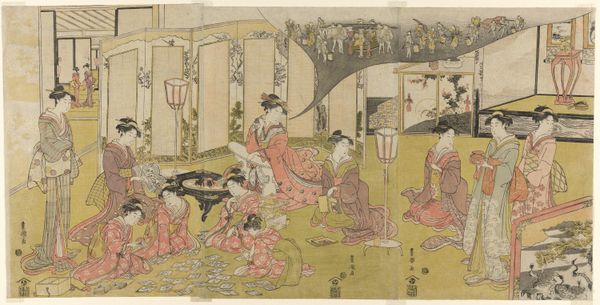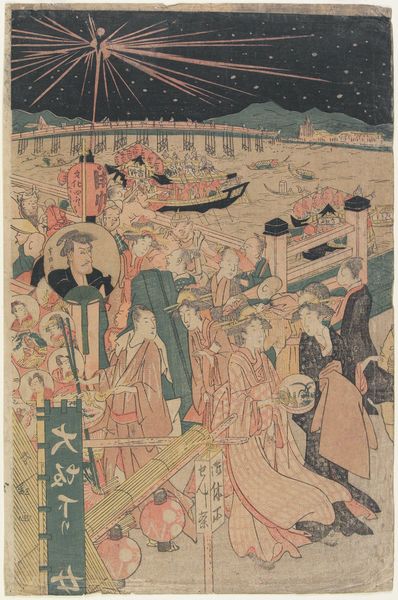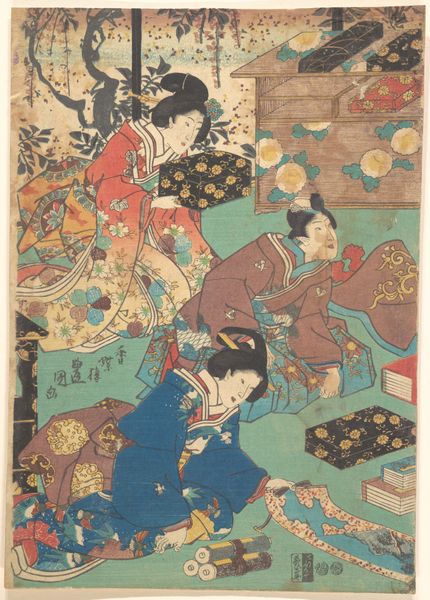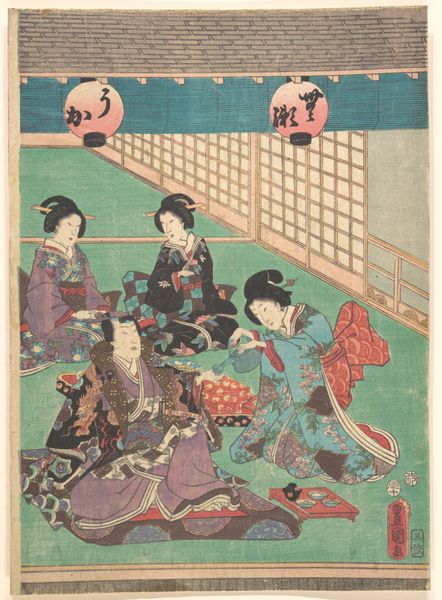
Actors Ichikawa Danjūrō VIII as Narukami Shōnin Possibly 1851 - 1855
0:00
0:00
print, ink, woodblock-print
#
narrative-art
# print
#
asian-art
#
ukiyo-e
#
figuration
#
ink
#
woodblock-print
Dimensions: 14 3/8 × 9 5/8 in. (36.5 × 24.5 cm) (image, sheet, vertical ōban)
Copyright: Public Domain
Curator: Immediately, I’m drawn to the almost cartoonish exaggeration of emotion in the figures. It's arresting, in a way I didn't anticipate. Editor: Let's delve into this dramatic woodblock print by Utagawa Kunisada, created sometime between 1851 and 1855. It's titled "Actors Ichikawa Danjūrō VIII as Narukami Shōnin" and we can appreciate its enduring presence here at the Minneapolis Institute of Art. Kunisada, a leading designer of ukiyo-e prints, vividly captures a moment of heightened tension, exploring themes of desire and transformation through Kabuki theatre. Curator: The tension is palpable. The color seems significant, maybe a visual metaphor for passion and anger. Do you have any thoughts about the printing process and materials used to enhance such dramatic moments? Editor: Woodblock printing itself is fascinating – each color requires a separate block, carved and applied meticulously, labor of love! In this particular print, the inks, likely water-based pigments, achieve incredible vibrancy, almost mimicking the dazzling theatrical costumes depicted. Notice the texture of the paper too, the fibers give warmth to this potentially staged spectacle. Curator: I find the layered symbolism truly remarkable, considering it was made and seen at a time of social and political constraints. What do the figures' facial expressions and positions tell us about gender, power, and social roles within Edo period Japanese society? Editor: I read the exaggerated facial expressions as the stylized output of performative Kabuki tradition; its actors embodied heightened drama in posture and narrative that spoke to larger moral questions during the Edo period. By examining production process and techniques of ukiyo-e printmaking we start to comprehend how consumerist society functioned alongside aesthetic practice. Curator: Thank you! Exploring these artworks, seeing how they functioned as more than just decorations allows us to build upon an appreciation and historical insight that helps reflect how the labor put into art affects social relations. Editor: Agreed. I find the enduring presence of pieces such as Utagawa Kunisada’s work so illuminating, precisely for this very dialogue we have initiated. I now have fresh eyes, with new dimensions revealed in this layered material artifact.
